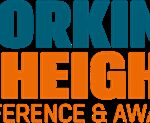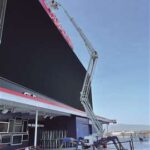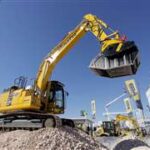How the Anatomy of an Aerial Lift Works
Understanding the anatomy of an aerial lift is crucial for both efficient operation and maintenance. These machines, whether they are bucket lifts, scissor lifts, or boom lifts, come in a wide range of designs, each suited for different tasks. Learning about the key components of an aerial lift can greatly enhance safety, performance, and maintenance routines.
Aerial Lift Components You Should Know
To operate or maintain an aerial lift, it’s essential to understand the various parts that make these machines function. Here’s a breakdown of some of the main components:
-
Steer Wheels: Attached to the steering axle, steer wheels are essential for navigating the lift. They help move the lift in a controlled manner and, in four-wheel drive models, also contribute to driving the lift.
-
Chassis/Frame: The frame is the backbone of the lift, providing structural support for the entire machine.
-
Drive Wheels: These rear wheels connect to the driving axle and are responsible for powering the lift. In some models, they work in combination with the steer wheels.
-
Ground Console: Located on the ground, this console controls the lift’s movements and is typically operated by a second person while the first is elevated.
-
Jib: A projecting arm attached to the platform, the jib extends the reach of the boom and increases its range of motion. This makes it possible to work in tight spaces by allowing movement in various directions.
-
Rotator: A small cylinder that connects the platform to the jib. The rotator allows the platform to move side to side and rotate 360 degrees, adding versatility to the lift’s movement.
-
Platform Control Console: This console, located on the platform, allows the operator to control the lift’s functions while working at height.
-
Platform: Similar to a gas pedal, the platform’s footswitch allows the operator to move the lift and control its auxiliary features.
-
Tower Lift Cylinder: This hydraulic cylinder is responsible for raising and lowering the boom sections.
-
Upright Level Cylinder: Works alongside the main cylinder to control the movement of the lift’s base and upper sections.
-
Jib Lift Cylinder: Specifically controls the movement of the jib.
-
Slave Cylinder: Works with the jib lift cylinder to help raise and lower the jib.
-
Main Base and Fly Sections: These parts provide the necessary height and extension to reach desired work areas.
-
Tower Base and Tower Fly Sections: Provide structure and support to the base and upper sections, ensuring stability during operations.
-
Guardrails: Essential for worker safety, guardrails prevent falls and can also serve as anchor points for lanyards. They help ensure that tools and materials stay secure on the platform.
FAQs About Aerial Lift Parts
How Long Do Aerial Lift Parts Last? Aerial lifts are built to last, with the machine itself typically lasting around 30 years. However, certain parts, such as joysticks, may wear out faster due to frequent use. Regular maintenance can extend the life of these components.
How Often Should Boom Lift Parts Be Serviced? Like all aerial lifts, boom lifts should be inspected before each use. Annual servicing is recommended, but parts that experience higher wear may need more frequent checks or replacements.
How Does Weather Impact Aerial Lift Parts? Weather can affect the performance of an aerial lift. Exposure to extreme cold or hot conditions can reduce battery life, cause engine difficulties, and affect fluid temperatures. To minimize these issues, it’s essential to properly store lifts and invest in protective measures, like engine heaters, especially during the winter months.




